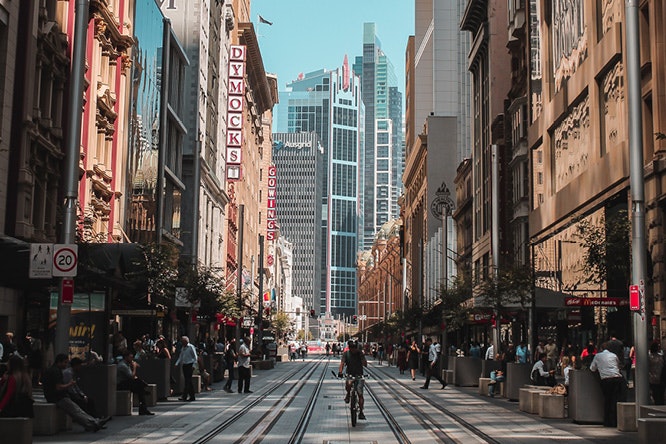Did you know that the average daily Sydney commute is around 71 minutes? According to the latest Household, Income and Labour Dynamics in Australia Survey, our city tops the nation’s cities for the time it takes to get to work. While this won’t surprise many of us, it has prompted a new vision for Greater Sydney – the idea of a 30-minute city, where residents can all reach work opportunities and essential services like shops and healthcare within half an hour of home.
This concept is far from a new one. It’s referred to as Marchetti’s Constant: named after an Italian physicist who theorised that since early days, humans have always adjusted their lives to maintain a consistent average travel time of around one hour per day. In ancient days that would have meant a smaller city because people were walking everywhere, and as transport options have evolved that radius has gradually expanded.
With an effective public transport system, a 30-minute commute could cover 40-50 kilometres or more. But with larger cities comes congestion and other complexities that lengthen the time to get to the CBD. Longer commutes are linked with absenteeism, dissatisfaction and lower productivity. On the other hand, those with shorter commutes and more active commutes (for example walking or bike riding) are happier and more productive at work. So what’s to be done?
The vision for Greater Sydney will shape three distinct areas. There’s the Eastern Harbour City including the CBD, the Central River City centered around Greater Parramatta, and the Western Parkland City. As each area becomes a central hub, residents can largely travel within their area for work and services, and won’t need to travel regularly into the Sydney CBD. This is a sensible solution, but realistically Sydney’s Harbour and CBD are set to remain the hub for career opportunities and entertainment in the foreseeable future.
This brings us back to the fact that a central property is still the best option for a short and easy commute to Sydney’s best work and service options. Inner-city suburbs like Paddington, Elizabeth Bay and Cremorne, and coastal suburbs such as Bondi and Bronte provide a unique opportunity to live a matter of minutes from Sydney’s iconic city centre. Many local residents can walk or ride to work. Sydney rail developments will also speed up commutes for many residents – for example, providing a 2-minute trip from Waterloo Station to Central Station as of 2024. Not only that, but the Eastern Harbour City will always be the only one of the three zones to offer our world-famous beaches. It certainly adds to the appeal of houses and apartments for rent in Bondi Junction and similar areas, compared to rental properties in the Sydney suburbs.
By 2056 it’s predicted that there will be 12 million people living in New South Wales making 28 million commuter trips a day. When it comes to choosing your 30-minute city, where would you prefer to be?
